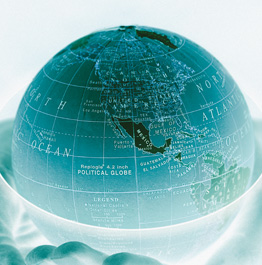The latest Global Report on Trafficking in Persons by the United Nations Office on Drugs and Crime (UNODC) points to fewer victims detected globally – fewer by 11 per cent in 2020 from the previous year. That was driven by fewer detections in low- and medium-income countries, says UNODC. The pandemic, besides reducing opportunities for traffickers to operate, may have weakened law enforcement capacities to detect victims.
UNODC Executive Director Ghada Waly said: “This latest report shows how the pandemic has increased vulnerabilities to trafficking in persons, further undercutting capacities to rescue victims and bring criminals to justice. We cannot allow crises to compound exploitation. The UN and the donor community need to support national authorities, most of all in developing countries, to respond to trafficking threats, and to identify and protect victims especially in states of emergency.”
The seventh, 186-page report by Vienna-based UNODC covers 141 countries and provides an overview of patterns and flows of trafficking in persons at global, regional and national levels, based on trafficking cases detected between 2017 and 2021. The document looks also at 800 court case summaries and makes suggestions to policy makers on responses.
Fewer cases of trafficking for sexual exploitation were detected during the pandemic as public spaces were closed and related restrictions may have pushed this form of trafficking into more concealed and less safe locations, making it harder to identify victims.
Globally, the number of convictions for trafficking offences also fell by 27 per cent in 2020 from the previous year – with sharper decreases registered in South Asia (56 per cent), central America and the Caribbean (54 per cent) and South America (46 per cent) – following a longer-term trend registered by the agency since 2017.
Court cases featured suggest that trafficking victims, when they are identified, escape from traffickers on their own and are in effect ‘self-rescued’ – there are more cases of victims escaping and reporting to authorities of their own initiative (41 per cent) than cases where victims were located by law enforcement (28 per cent), members of the community and civil society (11 per cent). The report authors point out that many victims of trafficking may not identify themselves as victims or may be too afraid of their exploiters to attempt escaping.
The report details how war and conflict offer opportunities for traffickers to exploit. Russia’s war in Ukraine is elevating trafficking risks for the displaced population. Most victims resulting from conflicts originate in, and are trafficked to, countries in Africa and the Middle East.
Breaking down trafficking in persons statistics by region, the report shows more trafficker impunity in sub-Saharan Africa and South Asia. Countries in these regions convict fewer traffickers and detect fewer victims than the rest of the world; and, victims from these regions are identified in a wider range of destination countries than victims from other regions.
The report also examines court cases; it suggests that female victims are subject to physical or extreme violence at hands of traffickers at a rate three times higher than males, and children are subjected almost twice as often as adults. The UNODC holds a dataset on trafficking in persons, with information on more than 450,000 victims and 300,000 (suspected) offenders detected worldwide between 2003 and 2021.
January meanwhile is Human Trafficking Prevention Month; see the US federal Department of Homeland Security website: https://www.dhs.gov/blue-campaign.









